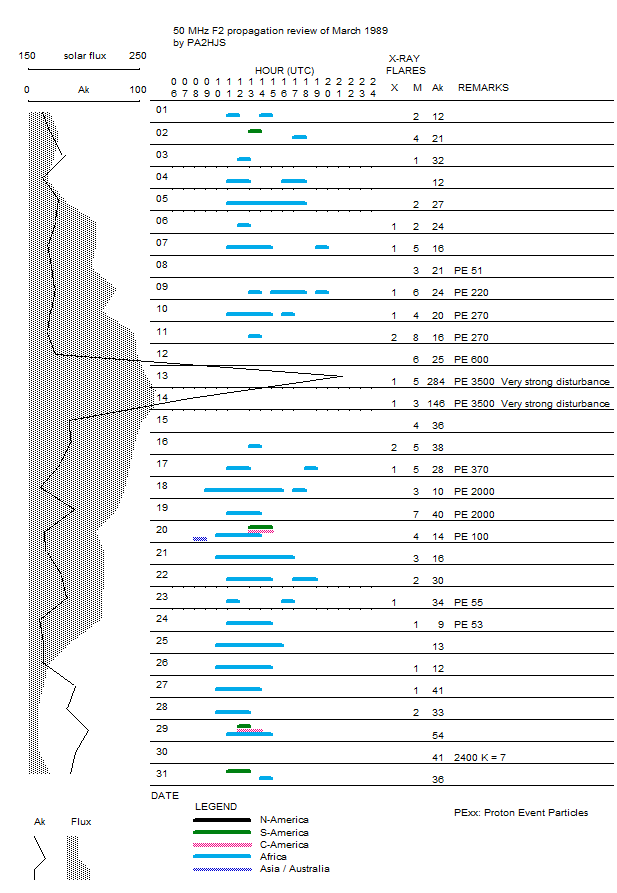There were times that reports were collected by editors of newsletters. PA0BN edited the Dutch VHF bulletin for many years and my observations were sent to him to merge with those of other active amateurs. The newsletters were a joy to read.
Nowadays, there are many blogs and fora, resulting in a lot but distributed information. The disadvantage is obvious: one has to scrape a lot of websites to gather information. Another problem is that one needs consistent data to be able to identify possible correlations between observations and solar-terrestrial phenomena.
It seems to me that many amateurs are mostly interested in “DX-ing”. Without sufficient solar activity, F2 propagation does not work and one would expect that those who take advantage of the gifts of mother nature, would be interested in the mechanisms that support the “DX-ing”.
I could be wrong of course, but my take is that there are those who seem to feel an urge to boost their ego’s. I observe “well known DX’ers” calling stations who were worked before or are from entities who they already have confirmed.
Well, the sky is simply the limit. Nowadays, you are very lucky to have a low noise environment and a tower with huge antennas. But my station does not reach the sky and is very modest. My noise level is about 15 to 20 dB higher than my station in rural France.
The good news is that I did not expect to hear good signals from ZS for example, but even with my little station with a 3 element yagi at about 10 m above ground, I hear them. That is the positive side which I prefer.
Working stations is difficult nowadays. That used to be a lot simpler. During cycle 22, we were extremely lucky to be one of the first continental European countries getting access to 50 MHz. In December 1987, my 100% homebrew station was ready to go and I applied for a special permit, required at the time. So on March 1st 1988, just after midnight, I made my first 6 metre contact with PA0RDY in Amsterdam, about 150 km away.
Because there was hardly any commercial equipment available for 6, most stations had homemade equipment. Another limiting factor was that only CW was allowed at first. Almost any station that I heard could be worked without too much trouble. A few calls were sufficient in most cases. This has changed entirely. As soon as DX appears, hundreds of stations start calling and it is simply a lottery.
Our permits were issued on the condition that we would provide reports and together with (now) PF5X, reports were compiled. Here is one such report:
http://www.dx.nl/?p=55
This triggered my interest in the inner workings of the ionosphere. I sure hope to lift the veil one day…
In the meantime, I will gather information and have the FT8 receiver running when possible. When in the shack, I monitor the band with an IC 7100, connected to a splitter in the IC 7600 RX antenna loop.
I am also optimising and enhancing my remote control solution, using TightVNC to control my radio computer. I am also testing with the Win4Icom suite. The first impression is that it works quite well.
The plan is to start a post every month, with details of my observations, both FT8 and other modes.
I am thinking of making summaries like the one below. This was made during solar cycle 22. At the time, the drawings were black and white, but MacDraw II can handle colours and it looks nice I think.

